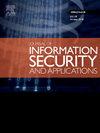SPNet: Seam carving detection via spatial-phase learning
IF 3.8
2区 计算机科学
Q2 COMPUTER SCIENCE, INFORMATION SYSTEMS
Journal of Information Security and Applications
Pub Date : 2025-01-11
DOI:10.1016/j.jisa.2025.103963
引用次数: 0
Abstract
Seam carving is an image content-aware retargeting operation that can automatically insert seams to expand an image or remove seams to reduce image size. However, it can also perform illegal image tampering by inserting or removing objects. We observe that upsampling is a necessary step for seam removal or insertion, and cumulative them can lead to significant changes in the frequency domain, particularly in the phase spectrum. In fact, according to the properties of natural images, the phase spectrum retains rich frequency components, which can complement the loss of the amplitude spectrum and provide additional information. To this end, we propose a spatial phase-based network (SPNet) that combines spatial and phase spectra to capture retargeting artifacts for image seam carving detection. In addition, since the artifacts usually hide in the local regions for the seam carving operation, the local texture feature is more effective than the high-level semantic one. Based on this, we introduce a shallow network to reduce the receptive field, it can highlight the local features while suppressing high-level semantic information. Extensive experiments demonstrate that SPNet achieves state-of-the-art (SOTA) performance.
求助全文
约1分钟内获得全文
求助全文
来源期刊

Journal of Information Security and Applications
Computer Science-Computer Networks and Communications
CiteScore
10.90
自引率
5.40%
发文量
206
审稿时长
56 days
期刊介绍:
Journal of Information Security and Applications (JISA) focuses on the original research and practice-driven applications with relevance to information security and applications. JISA provides a common linkage between a vibrant scientific and research community and industry professionals by offering a clear view on modern problems and challenges in information security, as well as identifying promising scientific and "best-practice" solutions. JISA issues offer a balance between original research work and innovative industrial approaches by internationally renowned information security experts and researchers.
 求助内容:
求助内容: 应助结果提醒方式:
应助结果提醒方式:


